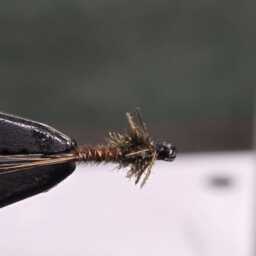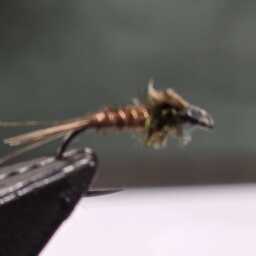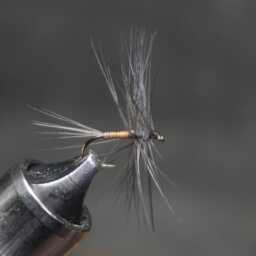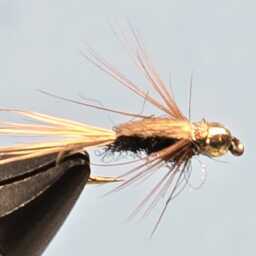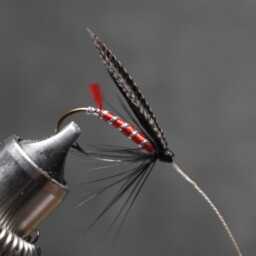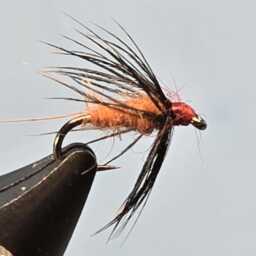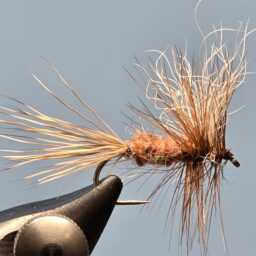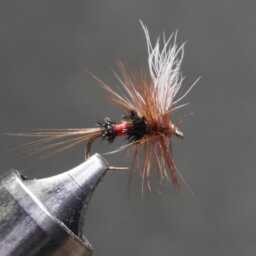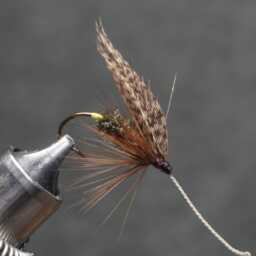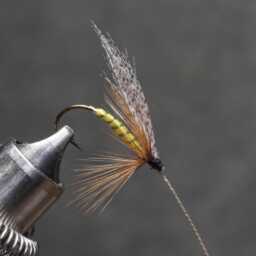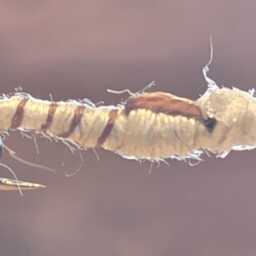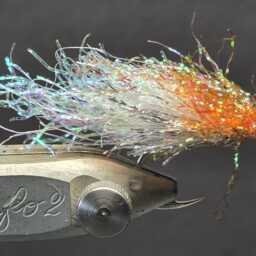Turkey feathers are a popular material in fly tying due to their versatility and effectiveness. They have been used since the early days of fly tying and are suitable for both fresh and saltwater flies. Their dark brown and black banding often mimics the colors of insects and aquatic organisms that trout feed on, making them a favorite choice for trout flies.
Marabou feathers, which are the soft, poofy feathers from the underside of a turkey, are particularly valued. These two-toned feathers are ideal for creating tails in nymphs and woolly buggers. Many anglers believe that woolly buggers made from marabou are among the most effective flies for catching trout.
Turkey tails are another useful feather type in fly tying. They can be used to tie wings for dry flies or as wing pads and shellbacks in the thorax of nymphs. Secondary tail fan feathers, being thinner, are perfect for creating wing cases on smaller-bodied nymphs.
The primary and secondary tail fan feathers can be employed in various ways, including for nymph bodies, wing cases, and peeping caddis patterns. Quills, the large feathers from a turkey’s wing, are mottled in natural, earth-toned colors and are effective for winged wet flies and certain streamers like the Muddler Minnow. Many recipes for winged fly patterns call for “matched turkey quill slips,” where feathers from both wings are paired to ensure symmetry.
Biots, or the leading edge of a turkey’s flight feathers, are valuable for constructing bodies on dry flies and nymphs. Their raised segmentation allows for wrapping tinsel or wire ribs, which adds both strength and flash.
The wild turkey (Meleagris gallopavo), native to North America, is the primary source of these feathers. It is one of two extant turkey species, the other being the ocellated turkey (Meleagris ocellata). Wild turkeys are among the largest birds in their range, with males typically weighing between 5 to 11 kg (11 to 24 lb) and measuring 100 to 125 cm (39 to 49 in) in length. Females are smaller, weighing 2.5 to 5.4 kg (5.5 to 11.9 lb) and measuring 76 to 95 cm (30 to 37 in).
Wild turkeys have relatively small wings, with a wingspan ranging from 1.25 to 1.44 m (4 ft 1 in to 4 ft 9 in), and a tail length of 24.5 to 50.5 cm (9.6 to 19.9 in). They are characterized by their long, reddish-yellow to grayish-green legs, a fan-shaped tail, and a large, featherless head with distinctive caruncles. Male turkeys exhibit a more vibrant coloration with red, purple, green, copper, bronze, and gold iridescence. They also have a tuft of coarse, hair-like filaments called a beard, which grows continuously throughout their lifespan.
Females, in contrast, have duller feathers in shades of brown and gray. Despite their lighter weight compared to some waterfowl, turkeys have the second-highest maximum average weight of any North American bird, just behind the trumpeter swan.
« Back to Glossary Index
